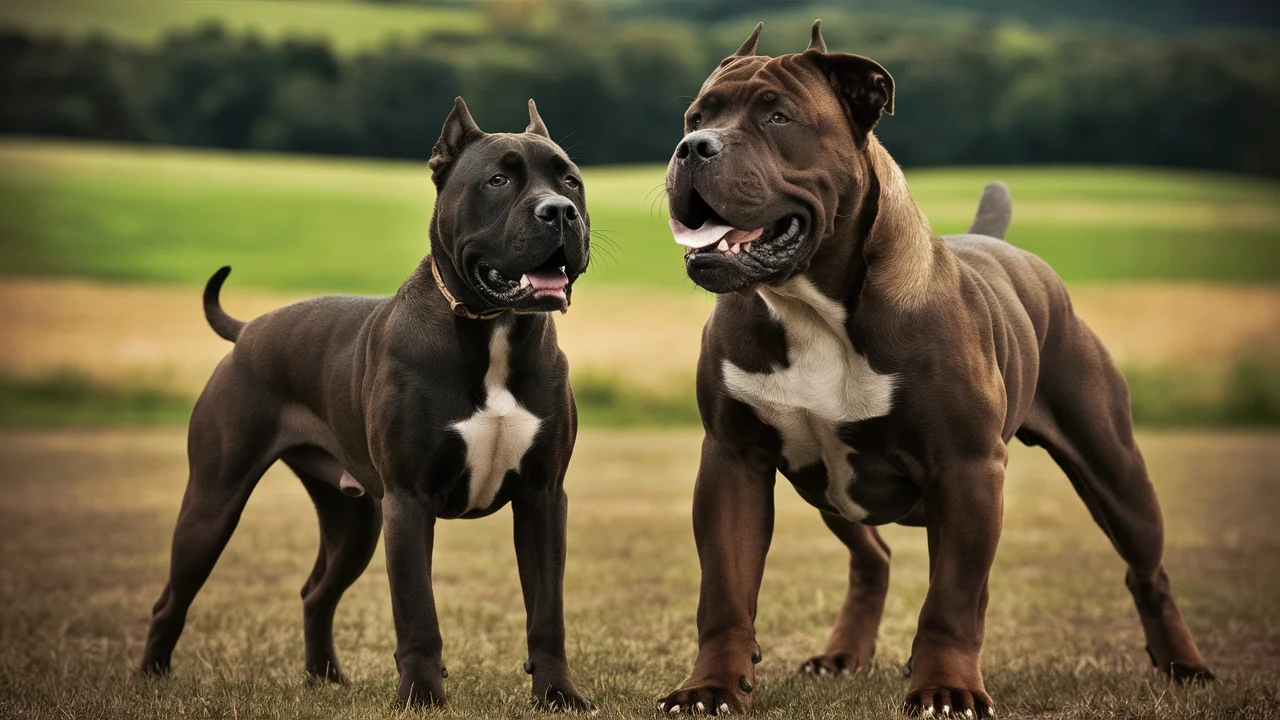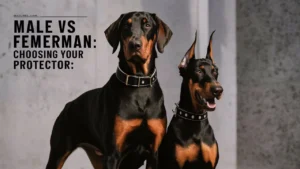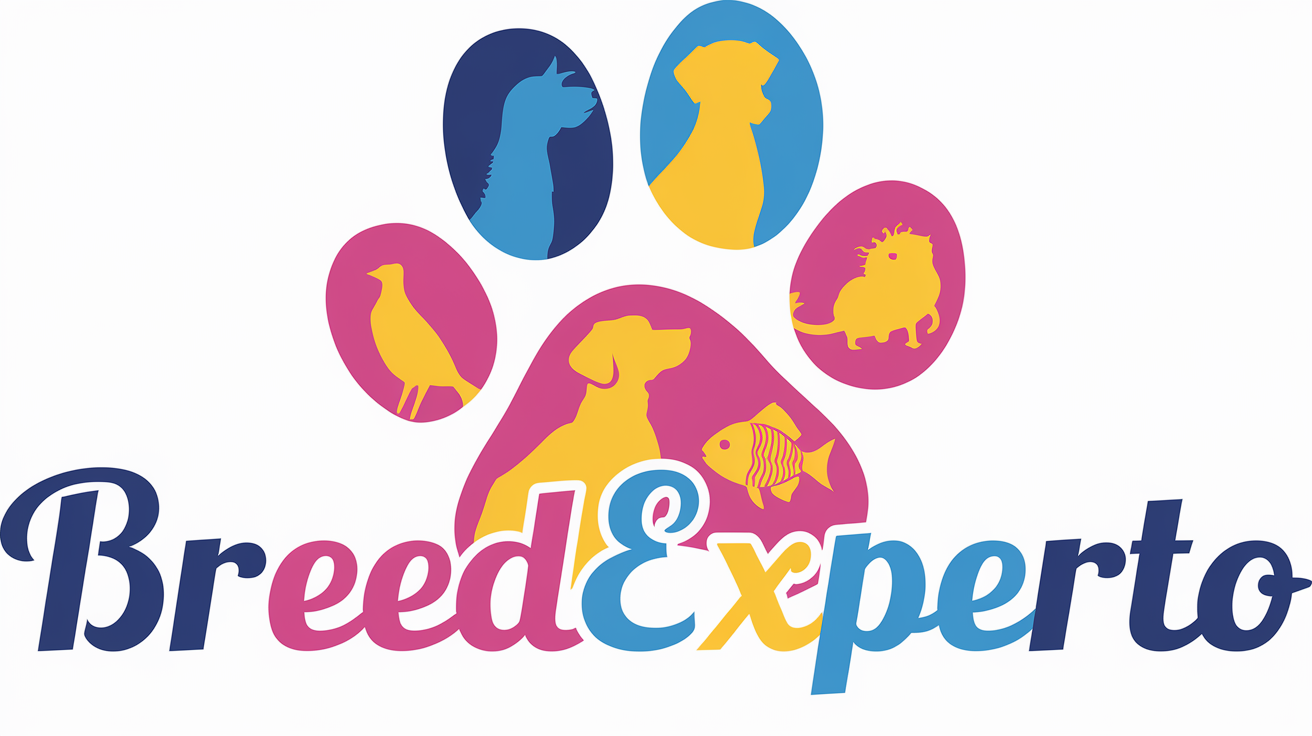Cane Corsos are majestic, powerful dogs known for their loyalty, intelligence, and strong protective instincts. If you’re considering adding a Cane Corso to your family, understanding the differences between male and female dogs is crucial.
This guide will delve deep into the characteristics, behaviors, and training needs of male and female Cane Corsos, helping you make an informed decision.
Cane Corso Overview
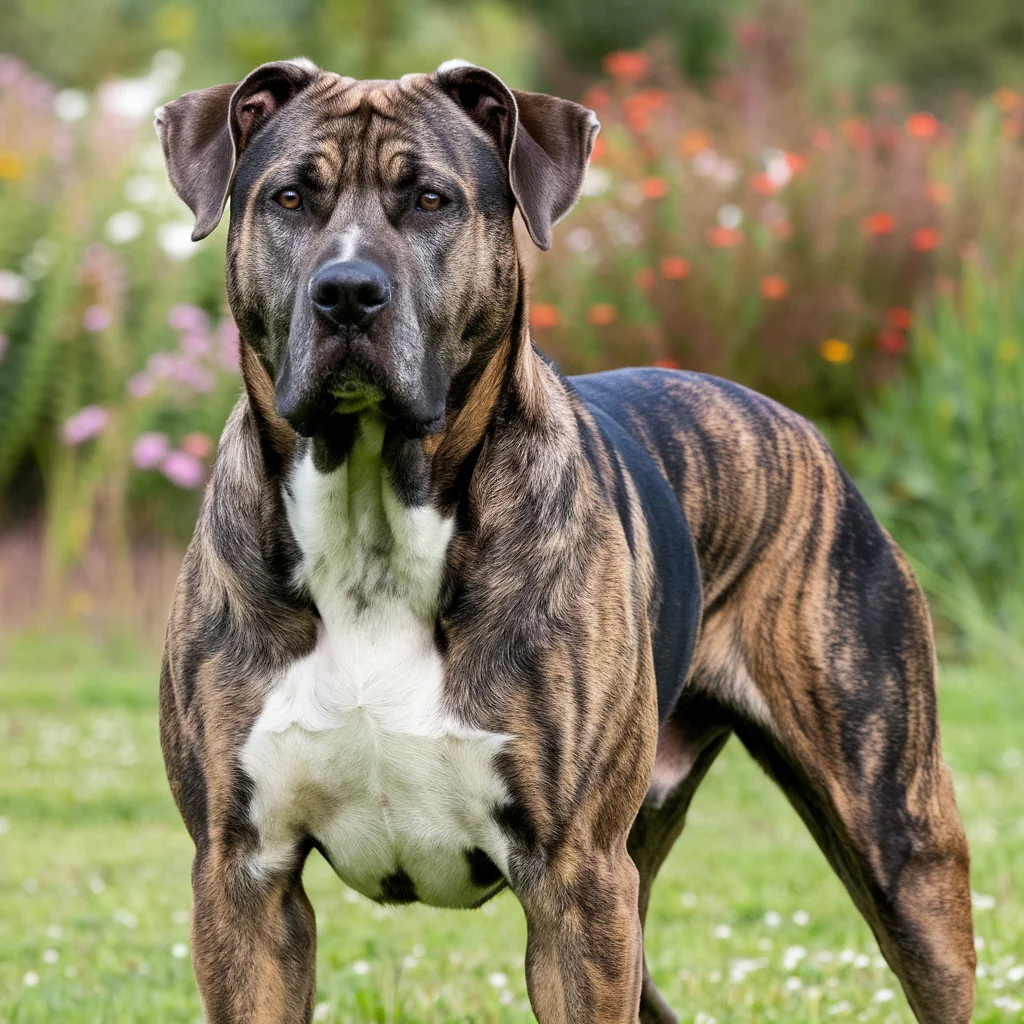
Originating from Italy, the Cane Corso (pronounced “kah-neh kor-so”) is a breed that has served as a guardian, hunter, and loyal companion for centuries. These dogs are descendants of the ancient Roman Molossers, bred for their strength and protective qualities. Cane Corsos are known for their athleticism and versatility, often excelling in various roles, including family pets, working dogs, and show competitors.
When deciding between a male or female Cane Corso, it’s important to consider their distinct characteristics, physical attributes, and behavioral tendencies. While both genders share core traits, subtle differences can influence your experience as a dog owner.
Physical Characteristics
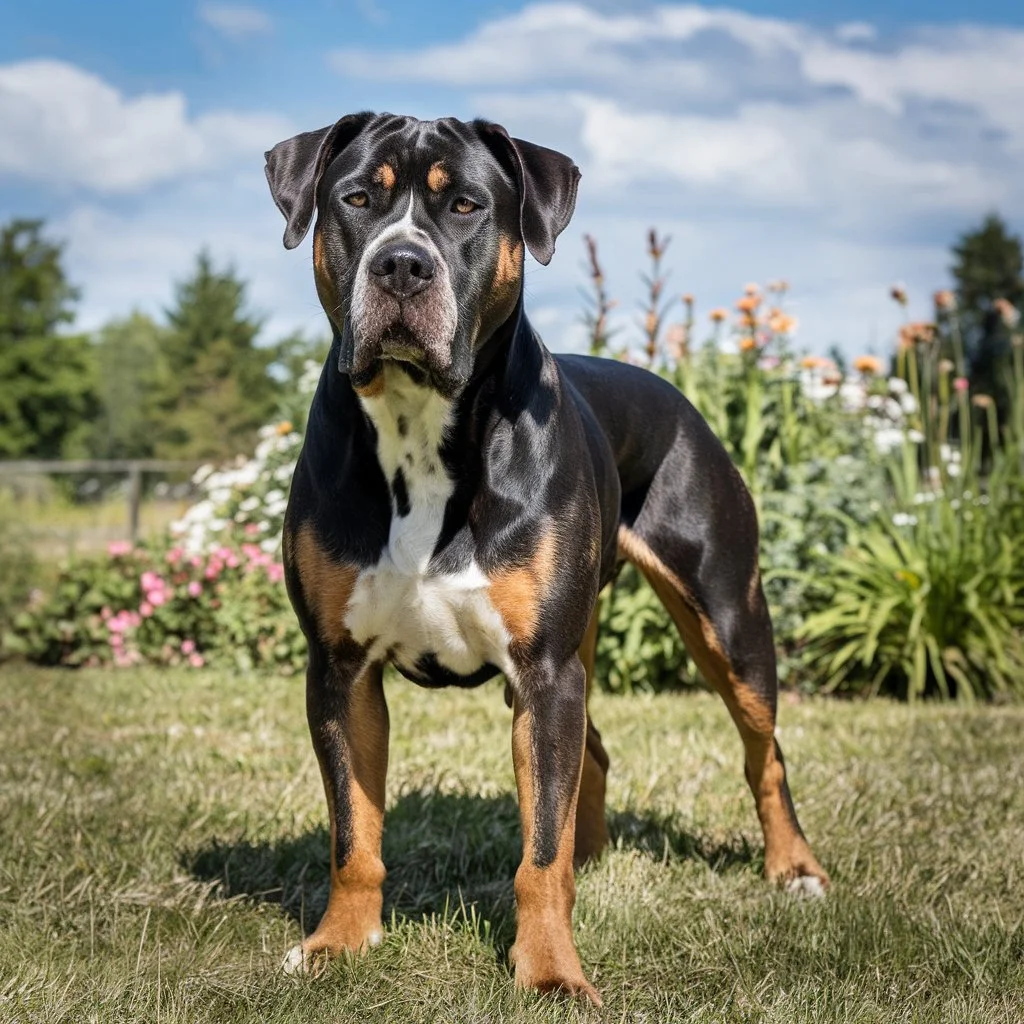
Males
Male Cane Corsos are typically larger and more muscular than their female counterparts. Here are some of their defining physical traits:
- Average Size: Males usually weigh between 99 to 110 pounds (45 to 50 kg) and stand 24 to 28 inches (61 to 71 cm) tall at the shoulder.
- Distinct Features: Males often have a broader head with a more pronounced brow ridge and a stronger jaw. Their overall build is robust, showcasing their strength and power.
- Coat Color Variations: Male Cane Corsos come in various colors, including black, fawn, brindle, and gray.
Females
Female Cane Corsos are generally smaller and have a slightly leaner appearance. Their key characteristics include:
- Average Size: Females weigh between 88 to 99 pounds (40 to 45 kg) and stand 23 to 26 inches (58 to 66 cm) tall.
- Unique Physical Traits: Females have a more feminine appearance with a narrower head and a less pronounced brow ridge compared to males.
- Coat Color Variations: Like males, females can also be black, fawn, brindle, or gray, but they may exhibit a more varied pattern of colors, including piebald and other combinations.
Comparative Chart
| Characteristic | Males | Females |
| Average Weight | 99 – 110 lbs (45 – 50 kg) | 88 – 99 lbs (40 – 45 kg) |
| Average Height | 24 – 28 inches (61 – 71 cm) | 23 – 26 inches (58 – 66 cm) |
| Build | Broader, more muscular | Leaner, more feminine |
| Head Shape | Broader with pronounced brow | Narrower with softer features |
| Coat Color | Various (black, fawn, etc.) | Various (including piebald) |
Temperament and Behavior
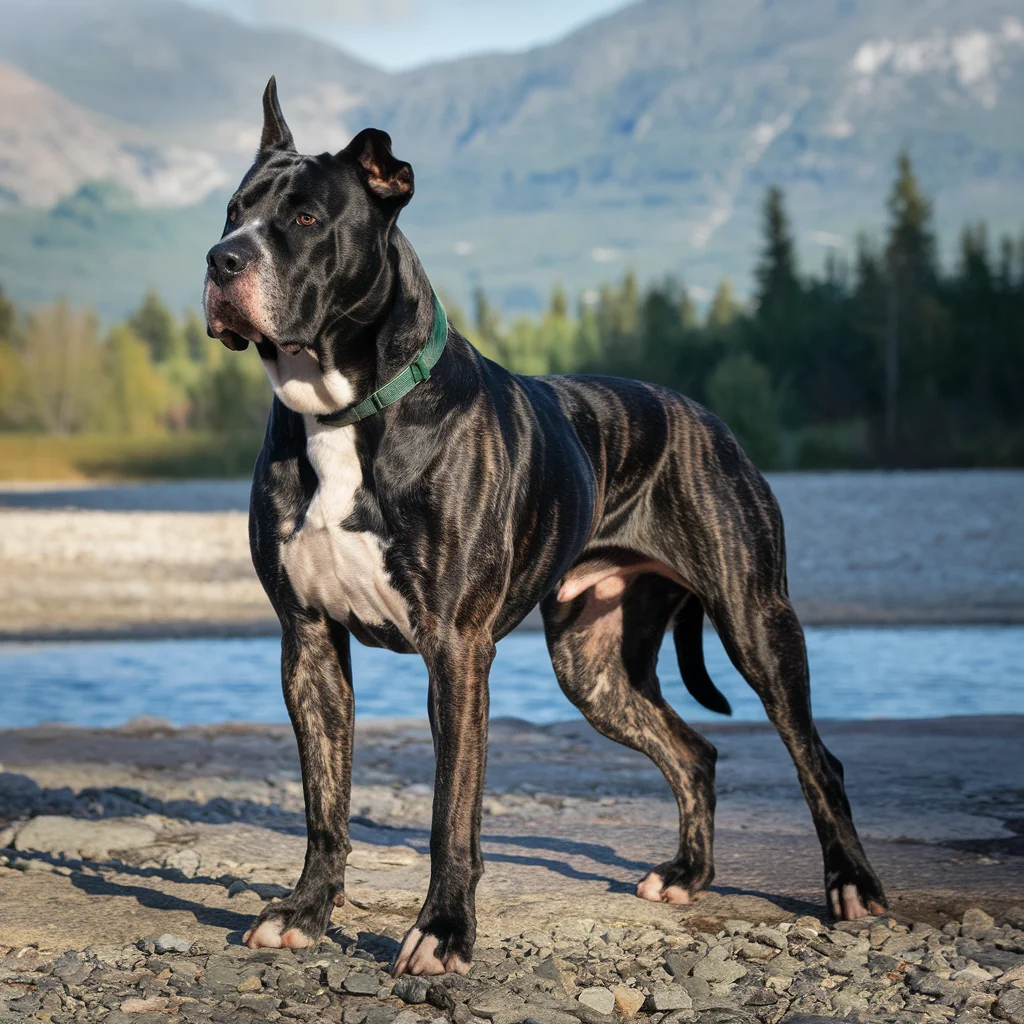
Understanding the temperament of male and female Cane Corsos is essential for fostering a harmonious relationship with your pet.
Males
Male Cane Corsos tend to exhibit more dominant and protective behaviors. Here are some key traits:
- General Temperament: Males are often more territorial and protective, making them excellent guard dogs. They are known to be affectionate with their families but may be wary of strangers.
- Common Behavioral Traits: Males can be playful and energetic, often requiring ample exercise to channel their energy positively. They might exhibit more assertiveness, requiring consistent training and socialization.
Females
Female Cane Corsos typically display a more nurturing and independent personality. Their notable traits include:
- General Temperament: Females are often less territorial and may be more welcoming to visitors, making them suitable family companions.
- Common Behavioral Traits: They can be affectionate and loyal, often forming strong bonds with their owners. Female Corsos may show a calmer demeanor, making them easier to train in some cases.
Comparative Analysis
Both male and female Cane Corsos have unique behavioral tendencies that can influence your choice:
- Males are generally more assertive and protective, while females are more nurturing and social.
- Males may require more rigorous training to manage dominant behavior, whereas females often have an easier time adapting to family life.
Training and Socialization
Training and socialization are vital for both male and female Cane Corsos to develop into well-adjusted adults. However, their approaches may differ.
Males
Training male Cane Corsos can be a rewarding yet challenging experience. Here are some strategies:
- Training Challenges: Males may be more stubborn and require a firmer hand in training. Establishing leadership early is crucial to prevent dominance issues.
- Socialization Needs: Early socialization is essential to expose males to various people, pets, and environments. This exposure helps them learn to distinguish between friend and foe.
Females
Female Cane Corsos may present different training advantages:
- Training Advantages: Females often show a greater eagerness to please, which can make them more responsive to commands and training techniques.
- Socialization Needs: Like males, females benefit from early socialization, helping them develop confidence and adaptability in different situations.
Practical Training Strategies
- Consistency: Use consistent commands and rules to reinforce training.
- Positive Reinforcement: Reward good behavior with treats, praise, or play to encourage learning.
- Socialization Opportunities: Enroll in puppy classes or arrange playdates to expose your Cane Corso to various experiences and people.
Health Considerations
Cane Corsos, like all breeds, have specific health concerns that potential owners should be aware of.
Males
Male Cane Corsos can face several health issues, including:
- Hip Dysplasia: This genetic condition can lead to arthritis and mobility issues.
- Obesity: Males may be prone to overeating, leading to weight-related health problems.
Females
Female Cane Corsos also have unique health concerns:
- Reproductive Health: Females may experience issues such as pyometra (a uterine infection) or false pregnancies.
- Weight Management: Like males, females can also struggle with obesity if not monitored closely.
Health Comparison
| Health Issue | Males | Females |
| Hip Dysplasia | Common | Less common |
| Obesity | Prone to overeating | Similar concerns |
| Reproductive Issues | N/A | Pyometra, false pregnancies |
Breeding and Parental Instincts
Understanding breeding and parental instincts is vital for those considering breeding Cane Corsos.
Males
Males typically exhibit strong breeding instincts:
- Role in Breeding: Male Cane Corsos influence the temperament of their puppies through their dominant traits.
- Parental Behaviors: While males may not play a direct role in puppy-rearing, their presence can influence the puppies’ social behaviors.
Females
Female Cane Corsos are often more involved in nurturing their offspring:
- Role in Breeding: Females play a critical role in carrying and caring for puppies, instilling essential social behaviors in them.
- Parenting Behaviors: They demonstrate protective instincts and nurturing behaviors, making them attentive mothers.
Impact on Puppies
The gender of the parent can significantly influence the behavior and health of the puppies. Males may impart strength and assertiveness, while females often nurture sociability and emotional intelligence.
Is It Better to Get a Male or Female Cane Corso?
Deciding whether to adopt a male or female Cane Corso involves weighing the pros and cons of each.
Pros and Cons of Male Cane Corsos
Pros:
- More protective and territorial, ideal for guarding homes.
- Generally larger and stronger, making them suitable for specific roles (e.g., protection work).
Cons:
- May exhibit dominant behaviors, requiring consistent training.
- Higher likelihood of health issues like hip dysplasia.
Pros and Cons of Female Cane Corsos
Pros:
- Often more nurturing and adaptable, making them great family pets.
- May be easier to train due to their desire to please.
Cons:
- May experience reproductive health issues.
- Smaller size might not appeal to those looking for a larger dog.
Factors to Consider
When choosing between a male or female Cane Corso, consider the following:
- Lifestyle: Assess your activity level, family dynamics, and experience with dog training.
- Space: Determine if you have enough room for a larger male or a slightly smaller female.
- Personal Preference: Think about which temperament aligns better with your expectations from a pet.
Conclusion
Choosing between a male or female Cane Corso is a significant decision that can impact your family and home. Understanding the unique characteristics, temperament, training needs, and health considerations of each gender will help you make a well-informed choice.
Whether you opt for a strong, protective male or a nurturing, sociable female, both genders can offer loyalty, companionship, and love. By weighing the pros and cons and considering your lifestyle, you’ll be better prepared to welcome a Cane Corso into your home.
Remember, the best decision is one that aligns with your family’s needs and enhances your life with this incredible breed.
Additional Resources
- Cane Corso Club of America: A resource for breed standards, health issues, and reputable breeders.
- Local Rescue Organizations: Consider adopting a Cane Corso from a rescue to provide a loving home to a dog in need.
